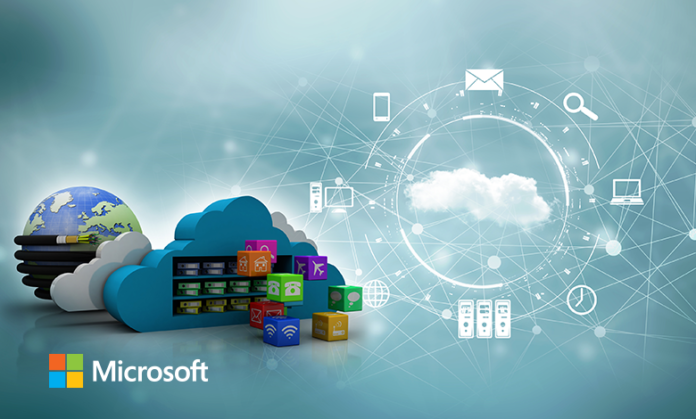You must have become familiar with Microsoft the day you start learning about computers. This is because most of the computer systems were earlier based on Windows operating system, an OS developed by Microsoft. Do you know what is Microsoft’s one of the largest and fastest-growing businesses these days? Well, it’s none other than its cloud platform Azure. Basically, Azure is a cloud-based computing system that offers over 200 fully functional cloud services to users. It is integrated and managed through Microsoft’s global network of data centers. It offers all three main types of cloud computing – software-as-a-service (SaaS), platform-as-a-service (PaaS), and infrastructure-as-a-service (IaaS).
Today, digital transformation has become the key driving factor for cloud computing. Majorly, it is forcing IT industries to spend billions of dollars on cloud computing owing to its benefits like reduced operational costs, system maintenance costs, unlimited storage capacity, scalability, enhanced security, and more. Ultimately, the demand for Microsoft Azure is growing rapidly. Though there are its tough competitors like Amazon Web Services (AWS) and Google Cloud Platform (GCP), Microsoft Azure has witnessed steady growth and holds around one-fifth of the overall public cloud market. Moreover, the demand for professionals skilled in using Azure is also surging. People are taking Microsoft Azure fundamentals certification to learn more about the platform and explore their skills in this domain.
This article discusses the fundamentals of Microsoft Azure.
Microsoft Azure Basics
Microsoft describes Azure as a cloud computing platform that has an ever-expanding set of services to help businesses build solutions and meet their desired goals. There is a range of cloud services offered by the platform like hosting the business presence in the cloud, remote storage, centralized account management, running fully virtualized computers along with new capabilities like augmented reality, Artificial Intelligence, and the Internet of Things (IoT).
Companies that are willing to explore Azure usually start by migrating their existing applications to virtual machines that run on the platform. Though it is a good start, Azure has so much more to offer, and companies can look forward to its other functionalities. The continuous innovation by Microsoft supports the development today and the product visions for tomorrow. Moreover, Azure services are offered on a pay-as-you-go model, meaning companies need to pay only for the services they use and can cancel their subscription anytime.
How does Azure Work?
Similar to other cloud platforms, Microsoft Azure works on a technology called virtualization. You must be knowing that computer hardware is basically a set of instructions encoded in silicon permanently or semi-permanently. Now, this hardware can be emulated in software using an emulation layer that maps software instructions to hardware instructions. In this way, virtualized hardware can execute in software as if it was the actual hardware itself. Similarly, the cloud is a set of physical servers in one or more data centers that execute virtualized hardware on behalf of end-users.
Fundamentally, Azure is a huge collection of servers and networking hardware that run a complex set of distributed applications to orchestrate the configuration and operation of the virtualized hardware and software on those servers. It is the orchestration that makes Azure quite powerful and the platform maintains and upgrades hardware behind the scenes. The end users do not need to worry about updating them.
Top Azure Services
Azure offers a number of cloud services and going through all of them can be quite overwhelming. So, here we have mentioned some of its most commonly used categories:
- Compute – This service allows a user to deploy and manage virtual machines, batch jobs, containers, and also supports remote application access. It is one of the top reasons why companies switch to Azure.
- Networking – It includes a range of options to connect the outside world to services and features in the global Azure datacenters. One can explore virtual networks, services for traffic management and diagnostics, and dedicated connections and gateways.
- Mobile – The mobile services allow developers to support mobile back-end tasks for Android, iOS, and Windows applications easily and quickly. There is offline data synchronization and connectivity to on-premises data as well.
- Storage – There are four types of storage services offered by Azure – Azure File Storage, Azure Queue Storage, and Azure Table Storage. These services are durable and highly available with redundancy and replication.
- Web – Developers can build and host web applications and HTTP-based web services on Azure. Cloud services dedicated to web hosting include Azure App Service, Azure Notification Hubs, Azure API management, and Azure Cognitive Search.
- Databases – As the name suggests, this service provides multiple databases to store a wide variety of data types and volumes. There are offerings for SQL, NoSQL, and other database instances like Azure Cosmos DB, Azure Database for MySQL, and Azure Database for PostgreSQL.
- Internet of Things (IoT) – You will find end-to-end solutions for IoT on the Azure platform. There are services that help capture, monitor, and analyze IoT data from sensors and other devices. IoT Central, Azure IoT Hub, and IoT Edge are some of the top services.
- AI – Users can explore a wide range of services to infuse AI, machine learning, and cognitive computing capabilities into their applications and datasets. The top services include Azure Machine learning Service, Azure ML Studio, Vision, Speech, and Natural Language Processing.
Excited to learn more about Azure? Why not consider enrolling in an Azure Fundamentals course online and gain expertise in using the platform!




